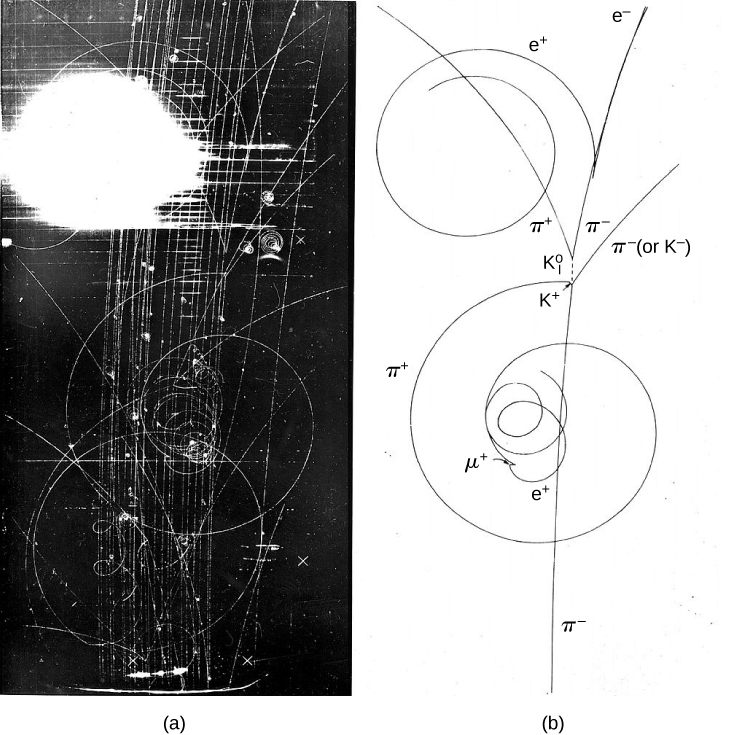| << Chapter < Page | Chapter >> Page > |
Check Your Understanding What is the lepton number of an electron-positron pair?
0
In the late 1940s and early 1950s, cosmic-ray experiments revealed the existence of particles that had never been observed on Earth. These particles were produced in collisions of pions with protons or neutrons in the atmosphere. Their production and decay were unusual. They were produced in the strong nuclear interactions of pions and nucleons, and were therefore inferred to be hadrons; however, their decay was mediated by the much more slowly acting weak nuclear interaction. Their lifetimes were on the order of to whereas a typical lifetime for a particle that decays via the strong nuclear reaction is These particles were also unusual because they were always produced in pairs in the pion-nucleon collisions. For these reasons, these newly discovered particles were described as strange . The production and subsequent decay of a pair of strange particles is illustrated in [link] and follows the reaction
The lambda particle then decays through the weak nuclear interaction according to
and the kaon decays via the weak interaction

To rationalize the behavior of these strange particles, particle physicists invented a particle property conserved in strong interactions but not in weak interactions. This property is called strangeness and, as the name suggests, is associated with the presence of a strange quark. The strangeness of a particle is equal to the number of strange quarks of the particle. Strangeness conservation requires the total strangeness of a reaction or decay (summing the strangeness of all the particles) is the same before and after the interaction. Strangeness conservation is not absolute: It is conserved in strong interactions and electromagnetic interactions but not in weak interactions. The strangeness number for several common particles is given in [link] .
(b) The following decay is mediated by the weak nuclear force:
Does the decay conserve strangeness? If not, can the decay occur?
Check Your Understanding What is the strangeness number of a muon?
0
What are six particle conservation laws? Briefly describe them.
Conservation energy, momentum, and charge (familiar to classical and relativistic mechanics). Also, conservation of baryon number, lepton number, and strangeness—numbers that do not change before and after a collision or decay.
In general, how do we determine if a particle reaction or decay occurs?
Why might the detection of particle interaction that violates an established particle conservation law be considered a good thing for a scientist?
It means that the theory that requires the conservation law is not understood. The failure of a long-established theory often leads to a deeper understanding of nature.
Which of the following decays cannot occur because the law of conservation of lepton number is violated?
a, b, and c
Which of the following reactions cannot because the law of conservation of strangeness is violated?
Identify one possible decay for each of the following antiparticles:
(a) , (b) , (c) , (d) , and (e) .
a. ; b. or ; c. or ; d. or ; e. or
Each of the following strong nuclear reactions is forbidden. Identify a conservation law that is violated for each one.

Notification Switch
Would you like to follow the 'University physics volume 3' conversation and receive update notifications?